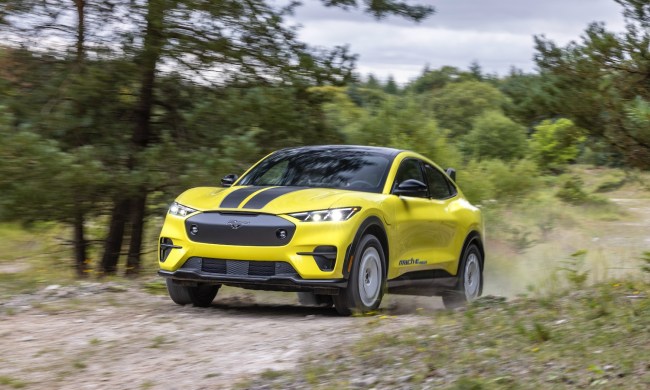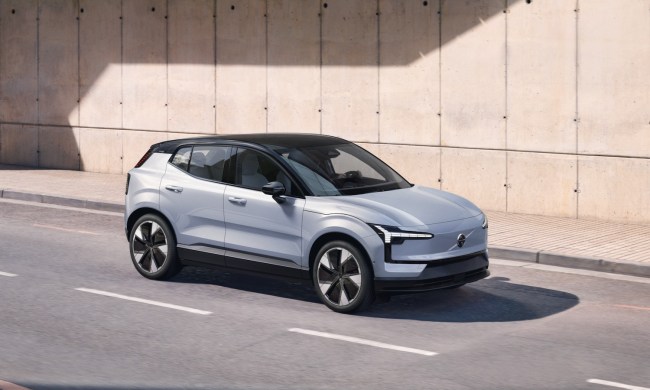Winter doesn’t officially start until December 22, but for many of us it began weeks ago when the temperature began to dip, and turning on the heater became more of a necessity than a luxury. Ford is cleverly using ambient lighting to trick motorists into thinking they’re warmer than they really are in the winter, and cooler in the summer. It sounds deceitful, but the company is developing this new technology in a bid to quell the range concerns associated with electric cars.
Ford points to research carried out by the National Renewable Energy Laboratory that finds using the climate control system in an electric car reduces driving range by up to 50 percent. It doesn’t matter whether you’re running the heater or the air conditioning; the end result is that the climate control system draws a tremendous amount of electricity. In the 2021 Mustang Mach-E, that means maximum amount of range drops from 270 to 135 miles. That’s not great.
Asking motorists to freeze during their commute isn’t an option; neither is handing out a free parka with every purchase. Instead, researchers realized blue light subconsciously makes people feel cooler, and red lights have the opposite effect. Adapting the color of the ambient lighting to the cabin temperature is a way reduce the amount of power drawn by the climate control system. Ford noticed a 3.3% reduction in power use when the lights are red, and a 2.5-percent reduction when they’re blue. This is significant in bigger vehicles that require more energy to cool or heat.

Ford’s German division packed this technology into a concept named Transit Smart Energy based, as its name implies, on a Transit van. The 10-seater is equipped with a roof-mounted solar panel that charges a 12-volt battery which in turn powers the ambient lighting, the heated seats, and the on-board electrical systems. The team in charge of developing the concept also fitted more insulation, double-glazed windows, a divider between the front and rear compartments, as well as a heat recovery system that captures the warmth generated by the drivetrain (even EVs get hot) and channels it to the cabin.
The coolest part of this concept, if you’ll pardon our pun, is the power sliding door which only opens halfway to prevent hot air from entering an air-conditioned cabin, or cold air from invading a cozy, heated space. All of these features sound promising, but they remain at the prototype stage, and they’re not available in a production car or van yet. Ford plans to begin testing these technologies in real-world conditions before the end of 2019, and it will begin putting them in its upcoming electric cars (including, shockingly, an F-150) during the early 2020s if it decides they’re worth using.



